Are you asking yourself whether gas welding is still useful today, considering all the technology we have? The answer is a strong yes—and 2025 proves it more than ever.
In spite of more advanced robotic systems and sophisticated welding machines, gas welding is still widely used in equipment maintenance and manufacturing.
Why? Because it is inexpensive, easy to use, and especially effective where precision and flexibility are required. Gas welding is literally at work every day across shipyards, auto repair shops, farms and factories to fix, fabricate and build indispensable tools and equipment.
For this reason, in this blog, you can find explained in simple language the top 10 industrial applications of gas welding for this year. From technical students and curious engineers to experts covering the field of gas welding, everyone grabs a new perspective of its relevance across numerous sectors.
Automotive Industry: Precision Repairs and Customization
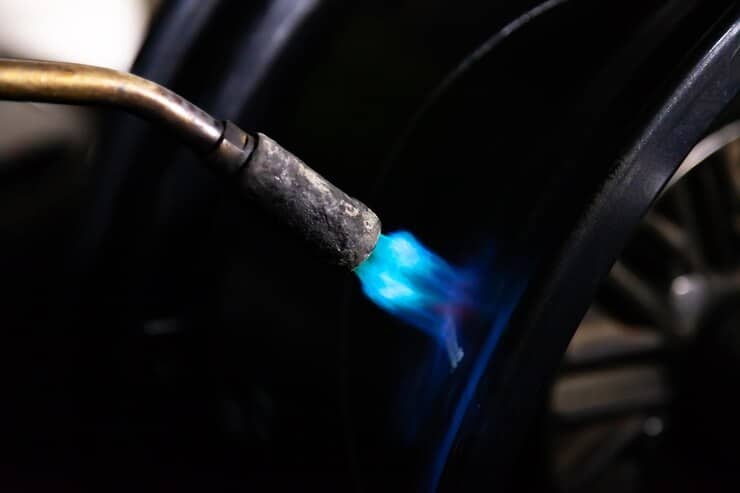
Gas welding continues to maintain popularity due to its affordability and precise control in both auto restoration shops and repair shops.
Expanded Uses:
- Restoration of a chassis: Pre-90s cars tend to have thick steel-framed bodies which require gas welding due to brittle aging parts for restoration without permanence.
- Exhaust System Maintenance: Gas mechanics are known for using oxy-acetylene torches on mufflers and pipes, so if you’re driving around those areas, do not hesitate to get your muffler checked.
- Fuel Tank Repair: Rather than replacing expensive tanks, tank welders prefer gas welding repairs on steel storage used widely in agriculture and off-road vehicles.
- Custom brackets for electronics: Car modifications like dashboards and sound systems have been accompanied by custom brackets that are welded with gas torches.
Why it Matters:
With the growing trend of restoring classic cars, local garages use gas welding for restoration due to its low cost and portability. The rise in the resale value of classic cars is also helping garage owners invest more in restoration projects. During restorations, garage owners tend to spend more on retrofits.
Aerospace and Aviation Maintenance: Lightweight Repairs Made Easy
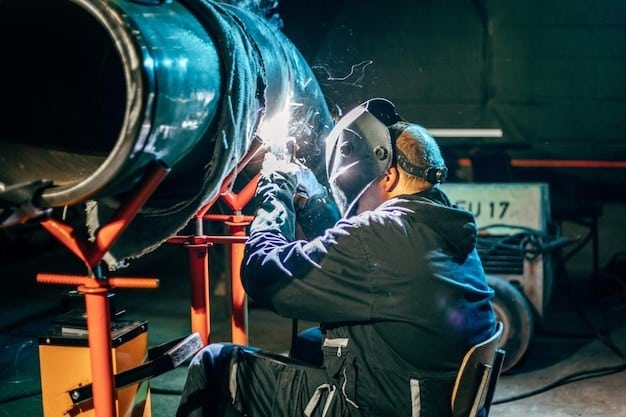
While high-tech welding dominates the manufacturing side of aerospace, maintenance gas welding is done during servicing in the field, making it essential for support.
Expanded Uses:
- Thin aluminum alloy repairs: Gas welding is often used for smaller aircraft, as it helps avoid over-penetration or fuselage skin distortion.
- Internal brackets: Components that help attach lights in aircraft cabins and other sensors as well as seat parts.
- Field-deployable tool repair: refers to remote airstrip mechanics who can utilize portable gas welding kits to repair broken wrenches, clamps, or hydraulic supports arms.
Why it Matters:
The rise of lightweight aircraft due to private aviation use makes on-site repairs vital. Gas welders become the preferred solution along with TIG or robotic systems that require expensive remote setups.
Shipbuilding and Marine Repair: Seafaring Solutions on the Go
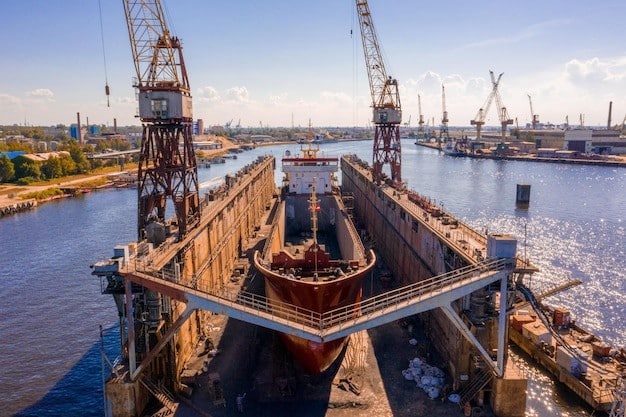
The continual exposure of ships and marine installations to salt, moisture, and vibrations necessitates routine metal repairs.
Expanded Uses:
- Mooring fixtures: Quick gas welds are often used for the maintenance of chains, winches and anchor brackets.
- Fuel line holders: Complex systems with hydraulic and fuel lines have steel clips and pipe brackets that are strengthened without complex disassembly repairs.
- Propeller housing work: Minor cracks in propeller shields can be boosted with temporary welds until the next major servicing.
Why it Matters:
Due to rapid global growth, ship downtime translates into huge financial losses. As always, gas welding is critical for maintenance at docks, emergency gas welding, or other remote operations.
Construction and Infrastructure: Welding Versatility for Field Work
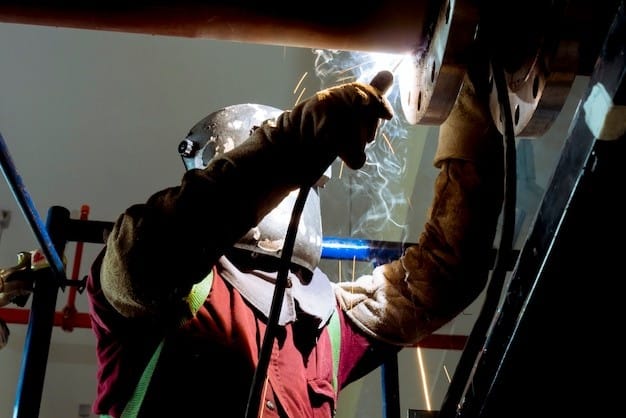
Gas welding is well regarded in construction because of its ability to deliver a quality, electric-free work environment due to the inability to use concrete tools.
Expanded Uses:
- Bridge retrofits and railing repairs: Notable in older pedestrian bridges and walkways.
- Metal signage frames and billboard structures: Heavy machinery does not need to be present as welders fix metal supports on billboards or frames swiftly.
- Equipment repair includes gas weld repair on cracked mixers, damaged scaffoldings, or trailer hitches, which are all deemed temporary fixes.
Why it Matters:
The construction industry has had to adopt faster and more efficient methods as a result of the need for smart city retrofitting and rapid infrastructure expansion. Off-grid gas welding is still one of the few techniques that can be utilized without being tethered to the grid.
Railway Industry: Maintaining The Backbone of Transportation
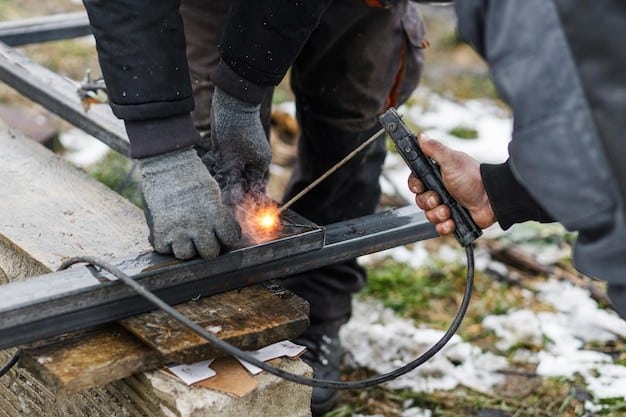
Gas welding is indispensable for trackside and station repair work as well as routine maintenance, which keeps rail systems safe.
Expanded Uses:
- Track component adjustment: Gas torches are used for repairs on non-load-bearing metal components such as fasteners, signs, brackets, etc.
- Catenary system braces repair: Corroded or cracked metal electric line supports are repaired.
- Public Use Metal Works: Regular gas weld maintenance is performed on fences, benches, and shelters as well as other stationary public use furnishings.
- Servicing small business equipment: Lawn care, plumbing, and machine frames are all serviced at our facility.
- Metalwork for signs and flower stands: Flower stands as well as racks and signage frames are often made using gas welds due to their clean finishes.
Why It Matters:
As more money goes into electric rail systems as well as smart transit options—old alongside modern infrastructures will need daily upkeep fuelled by gas welds.
Agricultural Equipment Repair: Farming With Flexibility
Gas welding is relied on in farming for its straightforwardness, dependability, and capacity to withstand considerable damage and wear.
Expanded Uses:
- Threshers and tillers: Guards made of strong metal blades, along with brackets, are reinforced during crop seasons.
- Parts of irrigation systems: Support poles or tank frames with welded joints are common in water management systems.
- Greenhouse frames: Frames given steel skeletons are built while maintained through gas welds.
Why It Matters:
Even with the adoption of automated farming technology, rural regions still rely on manual repairs for aging systems that require servicing. Gas welding aids remote fields with off-grid solutions tailored to the lack of those locations, such as no-electricity-needed services.
Master Metal Fabrication Workshops: The Backbone of Custom Metalwork
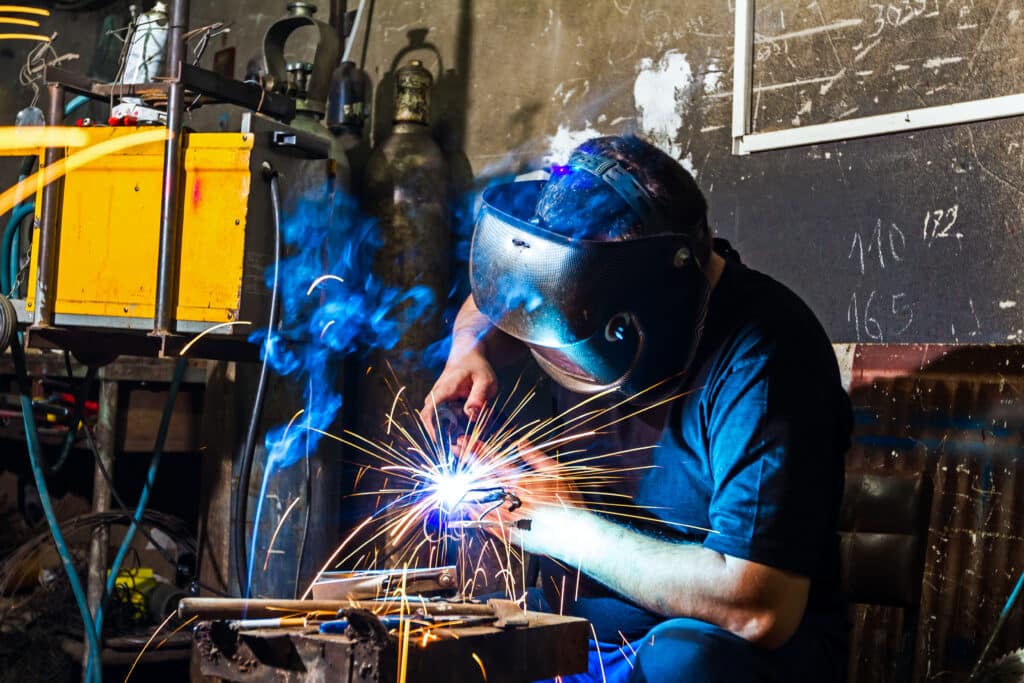
Creative solution finding powered by gas welding stems from small-town welders through specialized custom shops.
Expanded Uses:
- Prototype development: Functional prototypes are quick to build with gas torches by welders.
- Maintenance of small business tools: Plumbing fixtures, lawn care devices, and equipment frameworks are maintained through internal restoration.
- Decorative metalwork: Signage frames and racks as well as flower stands are made using gas welds due to their neat appearance.
Why It Matters:
Due to the rise in popularity for bespoke handmade items, small workshops depend on cheap gas welding processes. Gas welding is flexible, cost-effective without high overhead expenses and provides good profits for small scale producers.
HVAC And Refrigeration Precision At The Pipe
The precision required at the pipe frequently makes gas welding essential to HVAC professionals, particularly when retrofitting old units to new standards.
Expanded Uses:
- High volume commercial kitchens: Oxy-acetylene welding joining seams on coolant lines is standard practice for high-volume kitchen cooling units.
- Servicing Industrial Chillers: Large air conditioning units as well as chillers and cooling towers, need exact aluminium and copper tubing welds.
- Custom HVAC Stands and Duct Holders: These parts are made during the installation of commercial building systems.
Why It Matters:
With ongoing government incentives for low-emission, high-efficiency upgrades to HVAC systems, utilizing gas field welds on existing piping layouts becomes a frequent necessity due to the nature of such work.
Educational Institutions and Training: Laying the Welding Foundation
Welding schools around the globe typically kick off by teaching students gas welding techniques.
Expanded Uses:
- Material compatibility tests gas welding on mild steel, aluminum, and copper for both compatibility and quality assessment.
- Safe torch handling routines involving basic flame control safety procedures also fall under this category.
- Project-based assessments are held school-wide where students compete to design practical welded items such as bicycle frames or tool racks.
Why It Matters:
Tight education budgets make it crucial that schools find ways to teach foundational skills hands-on. Gas welding is one such option with low-cost equipment often used during lessons that do not need sophisticated machines or high-end tools.
Art And Sculpture: Fuelling Metal Creativity
Artists can use gas welding techniques to transform different forms of scrap metal into functional or aesthetically pleasing sculptures.
Expanded Uses:
- Interactive installations: Complex mechanical works or moving sculptures often contain small linkages and hinges that are gas welded for movement control.
- Stage props and theatre sets: Artists use gas welding to make metal frames that hold various theatre and movie backdrops.
- Community-based art programs: Workshops aimed at younger students run by schools teach gas welding with a focus on functional and visual art.
Why It Matters:
Alongside the emerging maker movement and street culture, numerous creators are integrating welding with artistic elements. For a small budget, gas welding is an inexpensive way to spark big ideas.
Advantages of Using Gas Welding in 2025
Despite other, more modern techniques, gas welding still has clear advantages:
- Portability: This can be taken anywhere including areas without electricity.
- Low cost: Small businesses or personal setups will incur little investment.
- Applicable on various metals: steel, aluminum, copper and more—makes it flexible in use.
- Precision: Altering the flame ensures accurate temperature control, allowing for reduced metal warping risk.
- No electricity needed: Ideal for uncontrolled settings like wilderness areas or other areas.
Tips for Using Gas Welding Safely in 2025
Just like in the past, safety is the top priority when gas welding. Update your class or personal practices with these new tips:
- Install flashback arrestors to stop the flame from seeping back into hoses.
- Do not place gas containers near flames, and keep them stored vertically.
- Have enough airflow within a room to minimise fume accumulation.
- Be fully equipped with goggles, gloves and clothes that do not ignite easily.
- Use valves regularly so that any leaks can be detected early on.
As of now, digital sensors and modern protective gear work hand in hand with gas kits to provide real-time alerts, making everything safer than in previous years.
Closing Words
In comparison to robotic welders and laser ones, gas welders are still incredibly versatile tools that will always serve a purpose across numerous industries even in 2025.
If you are an engineer, teacher, or student, understanding the basic use of gas welding is essential for every one of them, as it provides ample opportunity for manual skills during industrial work, unlike any other tool.
FAQs
Will gas welding still be useful in 2025?
Indeed, gas welding continues to serve a purpose in the remote areas of small businesses, repairs, and art industries because craftsmanship control is easier through this technique. Newer technologies have not changed this practice.
What kind of gas is used in gas welding?
The two most commonly utilised gases are acetylene combined with oxygen. For some applications, propane and hydrogen can be used as well.
What metals can be joined together using gas welding?
With regard to filler materials and methodology, steel, stainless steel, copper, aluminum, as well as cast iron are weldable.
Is gas welding safe to learn for beginners?
As long as the beginner has supervision while using recommended safety equipment, training will become easier, which makes the practice accessible to more people, providing entry into the world of advanced courses.



